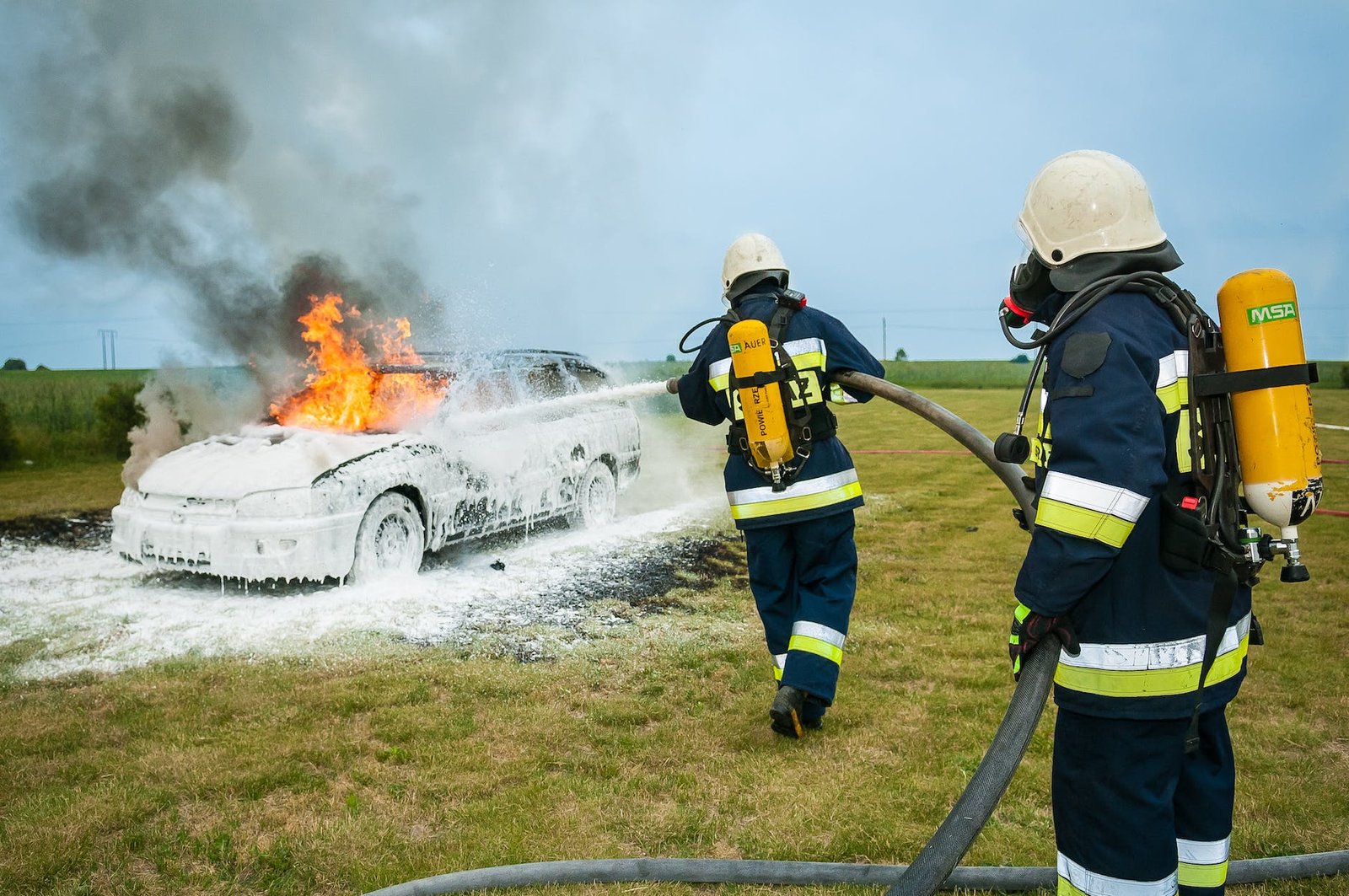Safety is a silent guardian in the workplace, subtly averting harm and fostering wellbeing. But how often is its invisible presence truly acknowledged, its principles actively discussed, and its measures diligently reinforced?
Silence is its weakness.
Effective safety cultures thrives on communication and education. Monthly safety topics become the lifeblood of this discourse, signaling the importance of consistent vigilance and learning within the workforce.
Recognizing Workplace Hazards
To proficiently identify potential hazards in the workplace, health and safety professionals must maintain an astute awareness of various risk factors. These encompass physical, chemical, biological, ergonomic, and psychosocial elements. Appreciating the multifaceted nature of hazards is imperative to developing a comprehensive safety strategy that effectively mitigates risks.
The recognition of hazards further necessitates a culture of continuous observation and reporting. Encouraging employees to actively participate in hazard detection promotes a collaborative environment where safety is the collective responsibility. This mindset is fundamental in maintaining a workplace where hazards are not only acknowledged but are systematically addressed and controlled.
Identifying Common Risks
Proficiency in risk identification requires an in-depth understanding of workplace processes and potential for harm. Regular assessments and audits are crucial in pinpointing areas of concern, thereby preempting hazardous incidents.
A systematic approach to risks revolves around Recognize, Evaluate, and Control (the REC Model). This model stresses the importance of proactive measures and engagement from all levels of an organization in comprehensively managing workplace hazards.
Every 7 seconds, a worker is injured on the job.
Categorization of risks is essential: distinguishing between imminent dangers and potential hazards inform the prioritization of safety measures. To reinforce this, ongoing education and training are pivotal in enhancing the workforce’s ability to recognize and appropriately respond to various risk scenarios.
Reporting and Managing Unsafe Conditions
A robust safety culture hinges on the vigilant reporting of unsafe conditions. Promptly and accurately communicating potential hazards ensures that they receive the priority attention required for rectification.
This reporting is the backbone of a responsive safety management system. Effective mechanisms must be in place to facilitate this critical communication channel.
Ensuring the efficacy of these reporting systems is imperative to fostering an environment of transparency and trust. Employees must feel secure and encouraged to report potential risks without fear of reprisal or neglect, and management must effusively demonstrate its commitment to these principles.
The follow-through on these reports is equally essential. Once an unsafe condition is reported, it must be met with a systematic approach to evaluation and control. Rigorous investigation, timely intervention, and appropriate rectification measures are non-negotiable. Failure to address such concerns not only puts the workforce at risk but also reflects poorly on organizational commitment to health and safety principles.
Emergency Preparedness

Ensuring that each employee is well-versed in emergency protocols is crucial for maintaining safety within the workplace. It involves comprehensive drills, clear escape routes, and designated safe zones, as well as the establishment of a robust communication system to keep everyone informed during a crisis. Employee training must encompass emergency response procedures, from basic first aid and evacuation plans to more complex scenarios involving hazardous materials.
Mitigation strategies and contingency planning are fundamental components of workplace emergency preparedness. Knowing how to efficiently evacuate or shelter in place empowers employees and minimizes the potential impact of an emergency situation. Regular updates and drills reinforce the knowledge and readiness required to handle unforeseen events effectively.
Conducting Regular Drills
Drills are a pivotal element in reinforcing workplace safety protocols. Regularly scheduled, they embed critical response behaviors and enhance situational awareness among employees.
Through systematic, repetitive training, employees can gain muscle memory for emergency procedures. Engaging in drills for various potential scenarios – whether fire, earthquake, active shooter, or chemical spill – ensures a dynamic and responsive workforce. It is vital that these drills simulate real-life situations as closely as possible to elicit authentic reactions and allow teams to practice decisive action under pressure.
In practice, drills should engage all levels of staff and be conducted without prior notice to best assess the readiness of the workforce. These controlled exercises should be followed by rigorous debriefings to identify strengths and areas for improvement. Input from employees can lead to the refinement of emergency protocols and the integration of cutting-edge best practices.
Ultimately, the frequency and rigor of safety drills are key in cultivating an environment of preparedness. Building this competency into the organizational culture reinforces the gravity of emergency situations and the importance of swift, coordinated responses. Drills serve as a vital component in the mosaic of safety measures, consistently fine-tuning a company’s ability to mitigate risks and protect its most valuable assets – its human resources.
Evacuation Plans and Routes
Evacuation strategies form the backbone of workplace safety.
An effective evacuation plan is a necessitated fixture in every workplace. It comprises a meticulous mapping of the quickest and safest routes out of the building, accounting for various scenarios that could manifest in an emergency. Clearance must be ample for all to exit swiftly. Equally, means of egress must be free from obstruction and clearly marked with appropriately lit signage.
Maintenance of exit routes is critically important.
Testing evacuation plans regularly is key – to keep staff adept and aware. Just as fire drills underline the necessity for spontaneous egress, so too does practice of evacuation routes foster a culture of safety awareness amidst daily operations. It ensures that the muscle memory of safety protocols remains sharp and responsive.
Response efficiency hinges on clear and accessible routes.
Further, routinely updating evacuation strategies is paramount to accommodate ongoing changes within the workspace, incorporating feedback from employees, and adhering to the most recent regulations. Such enhancements since the early 2023 safety codes may include the implementation of new technology for more efficient exits and emergency communication systems advanced enough to guide employees during an emergency.
Ergonomics and Workplace Wellness

Ergonomics and workplace wellness form a symbiotic relationship crucial to fostering a safe and productive work environment. Through the application of ergonomic principles, we actively mitigate the risk of musculoskeletal disorders (MSDs) and repetitive stress injuries (RSIs), ailments that frequently beset the modern worker. Holistic ergonomic strategies ensure that workstations and tasks align harmoniously with the human body, hence enhancing employee comfort and wellness. These ergonomic adjustments—ranging from proper chair height, keyboard placement, to the positioning of monitors—serve to support the employee’s posture and reduce strain. As conscientious Health and Safety Professionals, we recognize that organizational commitment to ergonomics is an ongoing, dynamic process that entails regular assessment, employee training, and adaptation of work practices in line with emerging research and evolving occupational landscapes.
Proper Lifting Techniques
Employing correct lifting techniques is pivotal in preventing workplace musculoskeletal injuries.
- Assess the Load: Before lifting, evaluate the weight and stability of the load. Ensure it is manageable and within your physical capability.
- Proper Stance: Stand close to the item with feet shoulder-width apart. This stable base supports balance during the lift.
- Bend at the Knees: Always bend at the knees and hips, not the waist, to avoid strain on the lumbar spine.
- Firm Grip: Secure a firm hold on the object and make certain that it won’t slip or shift as you lift.
- Straight Back: Maintain the natural curve of your spine; do not arch or hunch your back while lifting.
- Lift Gradually: Using your leg muscles, lift in a smooth and steady motion without jerking, which can cause injury.
- Close to the Body: Keep the load as close to your body as possible throughout the lift to reduce back stress.
- Pivot, Don’t Twist: Pivot your feet to turn and avoid twisting the torso, which puts undue pressure on the spine.
- Set Down Safely: When lowering the load, use the same techniques in reverse, ensuring the back remains straight.
Proper lifting mechanics are integral to maintaining spinal health and preventing debilitating injuries.
Adherence to these lifting protocols is not merely a recommendation but a critical safety standard that warrants rigorous enforcement and continuous education in all workplace environments.
Desk and Computer Ergonomics

Ensuring proper desk and computer ergonomics is paramount for preventing musculoskeletal disorders in the workplace.
- Ensure the top of the monitor is at or just below eye level to prevent neck strain.
- Position the monitor at least an arm’s length away to reduce eye strain.
- Utilize a chair with lumbar support to maintain the spine’s natural curve.
- Arrange the keyboard and mouse within easy reach to minimize overextension.
- Use a document holder, if necessary, to avoid constant head turning or neck flexion.
- Employ footrests for individuals whose feet may not rest flat on the floor.
- Encourage short, regular breaks to stand, stretch, or walk to increase circulation.
Correct seating posture and monitor placement are essential to the ergonomics equation.
Investing in ergonomic equipment and fostering awareness can lead to significant reductions in work-related injuries.
Health in the Workplace
Promoting health in the workplace encompasses a myriad of critical components that collaboratively aim to enhance employee wellbeing. Integral to this pursuit is the understanding and mitigation of occupational health risks that range from exposure to hazardous substances to the management of work-related stress. Health initiatives must be multifaceted, incorporating elements of physical, psychological, and emotional wellbeing, to create an environment where health can thrive. Comprehensive strategies might include the implementation of workplace wellness programs, mental health support, and proactive health screenings to detect potential ailments early. It’s imperative that these health recommendations are not viewed as standalone solutions but as interconnected elements contributing to a holistically healthier workforce.
Managing Stress and Fatigue
Workplace stress and fatigue are substantial risk factors that can compromise safety, productivity, and overall health. It’s crucial to recognize symptoms early and to establish strategies for managing them effectively.
Effective interventions are multi-tiered, involving both individual coping mechanisms and organizational support structures. It is the confluence of these approaches that fosters a resilient work environment.
When employees are equipped with stress management techniques such as mindfulness, and adequate rest periods are enforced, the likelihood of stress-induced errors diminishes. This proactive stance on stress and fatigue management can significantly improve job satisfaction and employee retention rates.
Moreover, organizations should prioritize creating a culture that does not stigmatize seeking help for stress or fatigue. By establishing clear channels for reporting these concerns and implementing systemic solutions like workload adjustments, companies demonstrate a commitment to their workforce’s mental and physical health. This, in turn, enhances overall workplace morale and efficiency.
Importance of Hydration and Nutrition
Maintaining adequate hydration and nutrition is essential for optimal cognitive function and physical performance in the workplace, both of which are crucial to safety. When employees neglect these basic health needs, their risk of making errors can increase significantly.
Dehydration and poor nutrition can lead to decreased alertness and reduced concentration. These states may result in increased occupational hazards, particularly in environments where precise actions or decisions are necessary.
A well-nourished and hydrated workforce is more likely to maintain a robust immune system, reducing absenteeism due to illness. Healthy eating and sufficient fluid intake can enhance mental clarity, improve energy levels, and ultimately contribute to a culture of safety and productivity within the organization.













